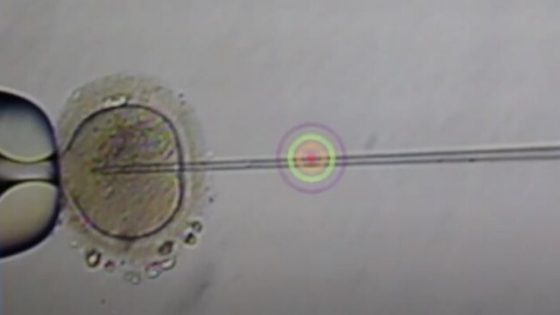
Overview
When conception occurs naturally, a woman’s body ovulates an oocyte (egg) from one of her two ovaries that then travels through her fallopian tube on the same side. The oocyte stays in the fallopian tube for approximately 24 hours, waiting for a sperm to fertilize it. During intercourse, millions of sperm are deposited into a woman’s vagina, which then make their way into the fallopian tubes. The sperm that travel within the tube where the egg is, make their way toward the egg. Many sperm can reach the egg at the same time, fighting their way to be the first to penetrate through the outer wall of the egg (zona pellucida). Once a single sperm successfully enters the egg, the zona pellucida instantly hardens to prevent other sperm from getting in. The egg and the single sperm combine and conception begins. This combined sperm and egg become a zygote. The zygote continues its journey through the fallopian tube to implant into the lining of the uterus to eventually grow, divide and develop into a baby.
Intracytoplasmic sperm injection (ICSI) is a lab procedure that can be done along with in vitro fertilization (IVF) to help sperm fertilize the egg by eliminating certain barriers that sperm may encounter during the natural fertilization process. In traditional IVF, thousands of sperm are placed in a dish with an egg, and once a sperm enters the egg, fertilization occurs. During IVF with ICSI, an embryologist uses a microscope to inject a single sperm directly into the cytoplasm (center) of a mature egg to help fertilization occur.
ICSI is a safe procedure that has been successfully utilized in IVF cycles since 1992 with the number of cycles using ICSI increasing over time. For cycles with male factor infertility, ICSI use increased from 76.3% in 1996 to 93.3% in 2012. For cycles without male factor infertility, ICSI use increased from 15.4% in 1996 to 66.9% in 2012 (Source: The American Society of Reproductive Medicine).
Why Would ICSI Be Needed?
ICSI, often times, is used when there are known male factor fertility issues, such as:
- The number of sperm produced is too low to do intrauterine insemination/IUI or traditional IVF.
- The sperm’s motility (how it moves) is abnormal or restricted.
- The sperm may have difficulties penetrating the egg’s outer layer.
- There’s a blockage in the male reproductive system that keeps sperm from releasing.
- The male partner has previously had a vasectomy.
- Previous traditional IVF attempts reveal there are challenges with the eggs fertilizing and/or developing into viable embryos.
ICSI Success
If ICSI is utilized, fertilization rates are typically 70-80% of all injected eggs. Each couple’s situation, though, can impact fertilization rates as well. Once eggs are fertilized, pregnancy rates are the same as traditional IVF cycle success rates.
If you’re interested in learning more about how ICSI can help you achieve pregnancy, or would like to set up a consultation to discuss your needs, please contact us.
